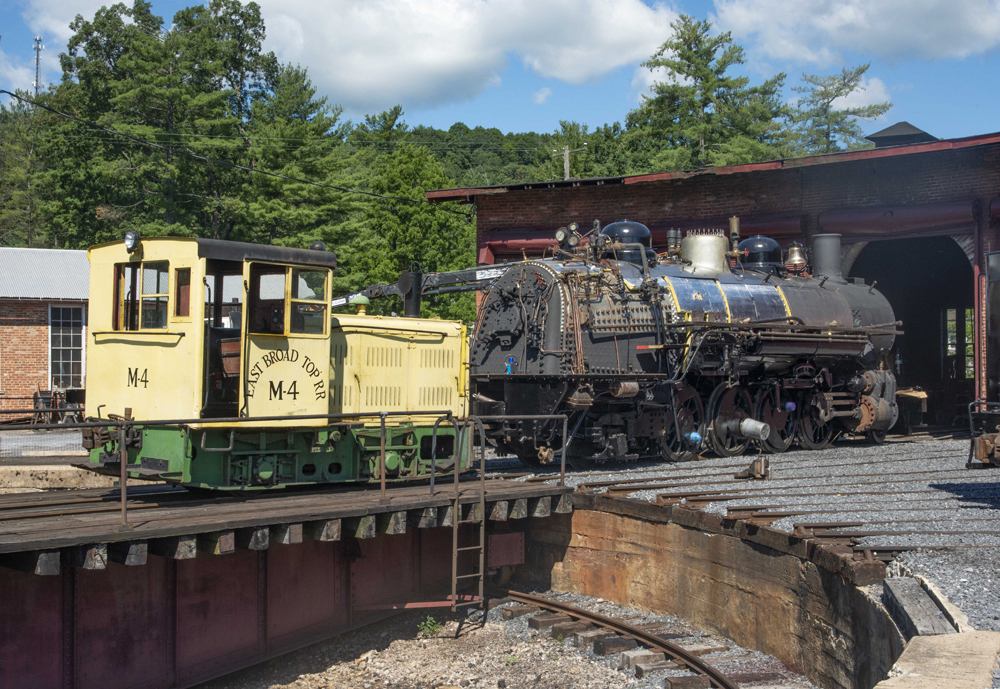
ROCKHILL FURNACE, Pa. – Work continues on preparing East Broad Top’s 2-8-2-type engine No. 16 (Baldwin, 1916) for a return to active service.
The narrow-gauge railroad, a National Historic Landmark, last used steam power in 2011, just prior to the shutdown that put the 33-mile railroad into a deep freeze for more than eight years. In 2020, a new non-profit group, the EBT Foundation Inc., was formed to buy the property from its previous owner, the Kovalchick Salvage Co. of Indiana, Pa.
While four of the six Baldwin 2-8-2 Mikados on the property (Nos. 12, 14, 15, and 17) saw service during the 1960-2011 tourist era, it was No. 15 that closed out steam operations — and regularly scheduled passenger service. After that, EBT ran a few motorcar trips for the Friends of the East Broad Top, but steam was done. When the foundation took over in 2020, it resumed tourist service with a diesel-electric center-cab switcher, General Electric No. M-7, while planning to bring steam back.
Among the engines, No. 16 (1916) was judged to be the best candidate for restoration — largely because it hadn’t run since 1956 — and work began almost immediately.
EBT’s Mikados fall into three sizes. No. 12 is the smallest and oldest (1911, 56 tons), while Nos. 14 and 15 are of medium size (1912 and 1914, 73-75 tons). Nos. 16-18 (built 1916, 1918, and 1920) are the largest engines (81-82 tons). All three are equipped with superheaters, thermal efficiency devices that preheat and dry steam before discharging it into the cylinders to produce movement. Superheating is a rarity for narrow-gauge engines, as most American narrow gauge railroads were declining or abandoning by the time superheating became common in steam-locomotive design in the early 20th century.
No. 16 passes boiler test; finishing work remains
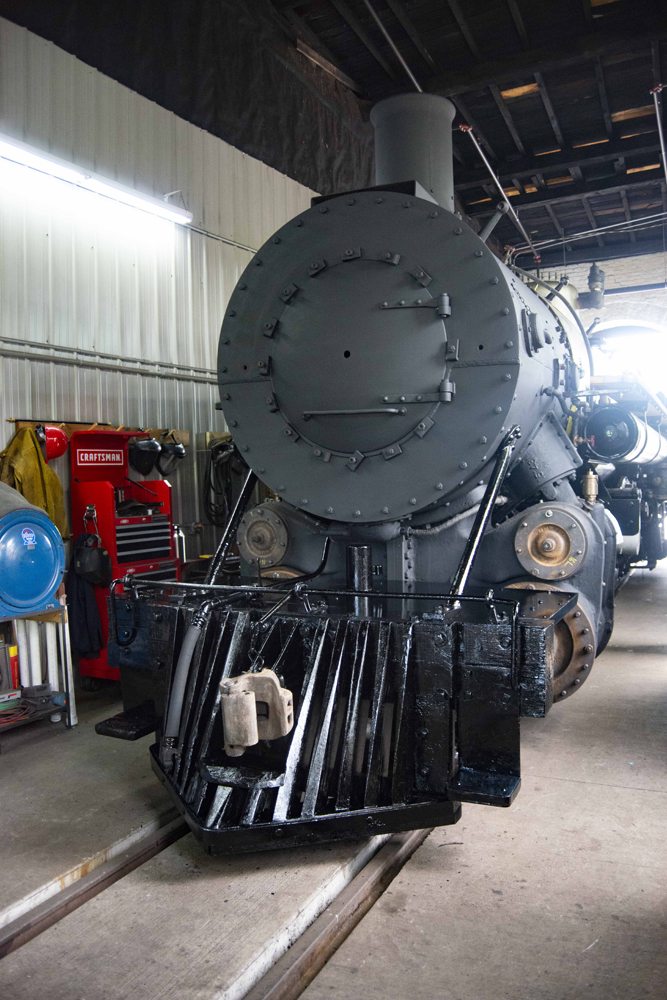
EBT No. 16 successfully passed its hydrostatic boiler test on May 17, 2022, and since has been test-steamed with Federal Railroad Administration staff observing. The FRA was satisfied with the test. “That allows us to install everything back on the boiler,” says EBT Master Mechanic Dave Domitrovich. “We don’t have to take it off again before running it.”
A considerable amount of finishing work remains.
Three dome covers have been painted and two have been remounted, and major fittings and appliances are either renewed or replaced and are back on the engine. This includes bell, whistle, sight glasses, tri-cocks (additional boiler-level checks), air pumps, air tanks, Hancock injectors, and boiler-pressure and brake-pressure gauges. The engine’s front end (smokebox and pilot) and tender are painted. All of the plumbing is completed — meaning air piping and power (steam) piping — and the throttle has been reinstalled, a major step.
The pistons and valves are reinstalled in the cylinders, Domitrovich said. The next major tasks involve reinstalling the main and side rods and timing the valves.
Completion is getting closer, but not imminent, with the next steps being placement of boiler lagging (insulation), and completion of new stainless-steel boiler jacketing (now 50% done). The last thing to be handled will be painting and reinstalling the cab.
No. 15 to be next for restoration
In a change from the original plan, Domitrovich said the shop will turn to restoring No. 15. Originally, No. 14 was scheduled to be next, but the railroad discovered it required more extensive work than first thought. The engine needs major boiler work and major running-gear work, while No. 15 needs only running-gear work.
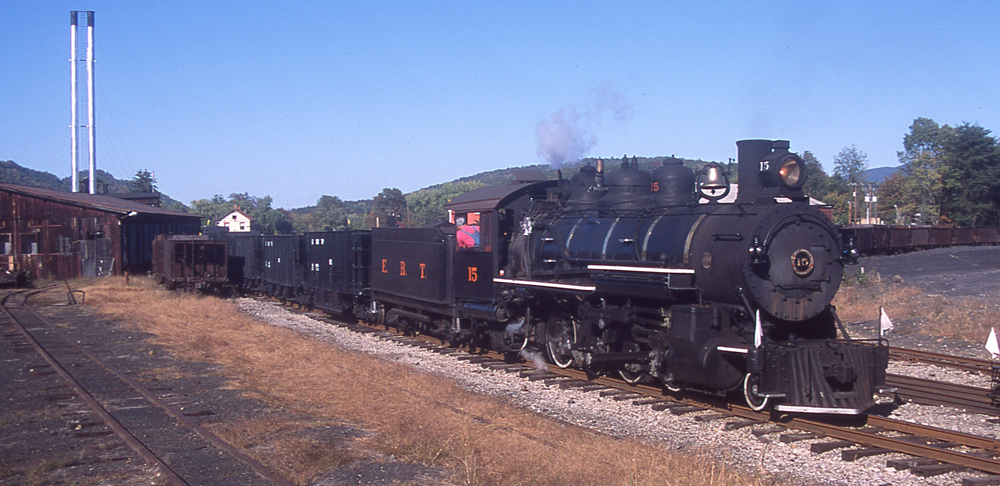
The reason is that years ago, Strasburg Rail Road’s Linn Moedinger, Rick Musser, and Jim Rice (all of whom mentored Domitrovich when he was at Strasburg) helped EBT get No. 15 running again when No. 14’s FRA time expired. As a result, Domitrovich says, all of the FRA-mandated Form 4 federal boiler safety calculations for that engine have already been done, sharply cutting the amount of time and labor needed.
EBT has already bought eight new drivers for the two medium-sized 2-8-2s (14 and 15), so those parts will be on hand, he says. Boiler tubes bought for No. 14 will be used for No. 15, as the engines are the same size.
“The (15’s) boiler is a known quantity,” says Domitrovich. “All the boiler work was done, and it’s known to be in sound condition.”
Another new passenger coach
The second new coach (of four) built by Hamilton Manufacturing, Inc., of Bellingham, Wash., has arrived. It was placed on its new trucks, and work is continuing to set it up with new couplers, truss rods, air hoses, and heating and lighting equipment. It will be numbered 22.
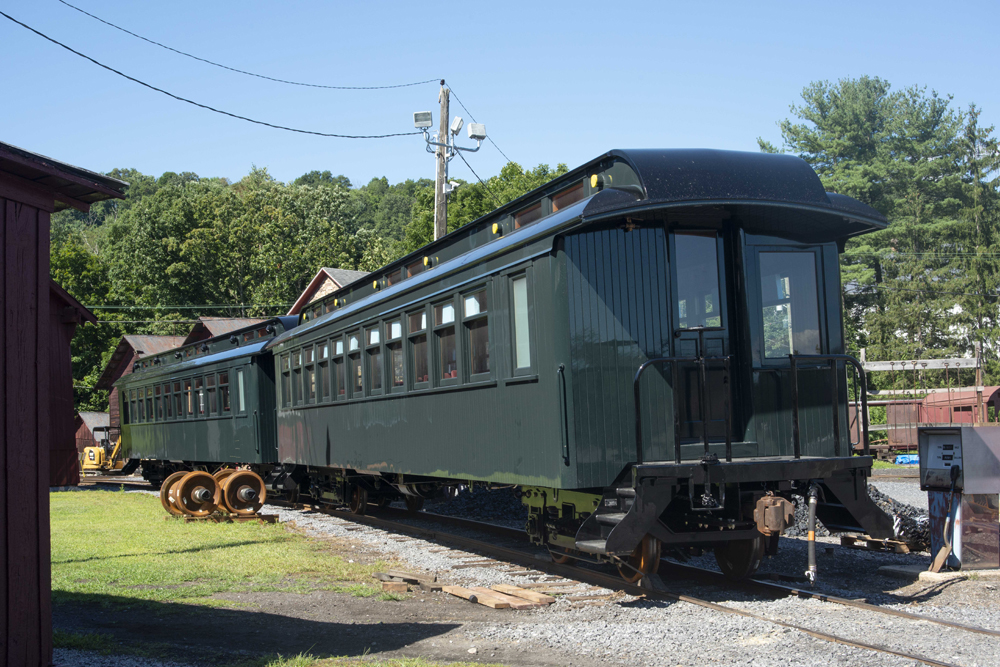
EBT’s first new car, No. 21, arrived on July 19 [See “First new coach arrives …,” Trains News Wire, July 20, 2022] and has already gotten a break-in test run. EBT staff found it to be free-rolling (it’s equipped with Timken roller bearings) but heavier than cars now in use.
Next to arrive will be coach No. 23 (like the others, with a capacity of 52 seats), and a wheelchair-lift-equipped, 40-seat combine, No. 17. Built to mimic the appearance of EBT’s vintage wooden cars, the new cars’ exterior is finished in a PVC-like vinyl that is painted dark green.
EBT General Manager Brad Esposito says the railroad may be in the market for more carbody shells in the future. These would be delivered without coach seats, so EBT can configure them for specialty use such as first-class, parlor-car seating, or as dining cars.
Lettering of the cars and No. 16 and its tender will be handled by George Williamson of Harrisburg, Pa., who does business as GW Signs. “He’s one of the few guys who still does hand lettering,“ Domitrovich says. “We didn’t want to use vinyl (lettering) on the engine or cars, because we’ve gone to inordinate lengths to make [them] look historically accurate.” Williamson, who does custom work on racing cars, drag-strip cars, dirt-track cars, and billboards, “is obsessed with this,” Domitrovich says, because “his father worked for the Pennsylvania Railroad.”
Brake shop/machine shop is open for business
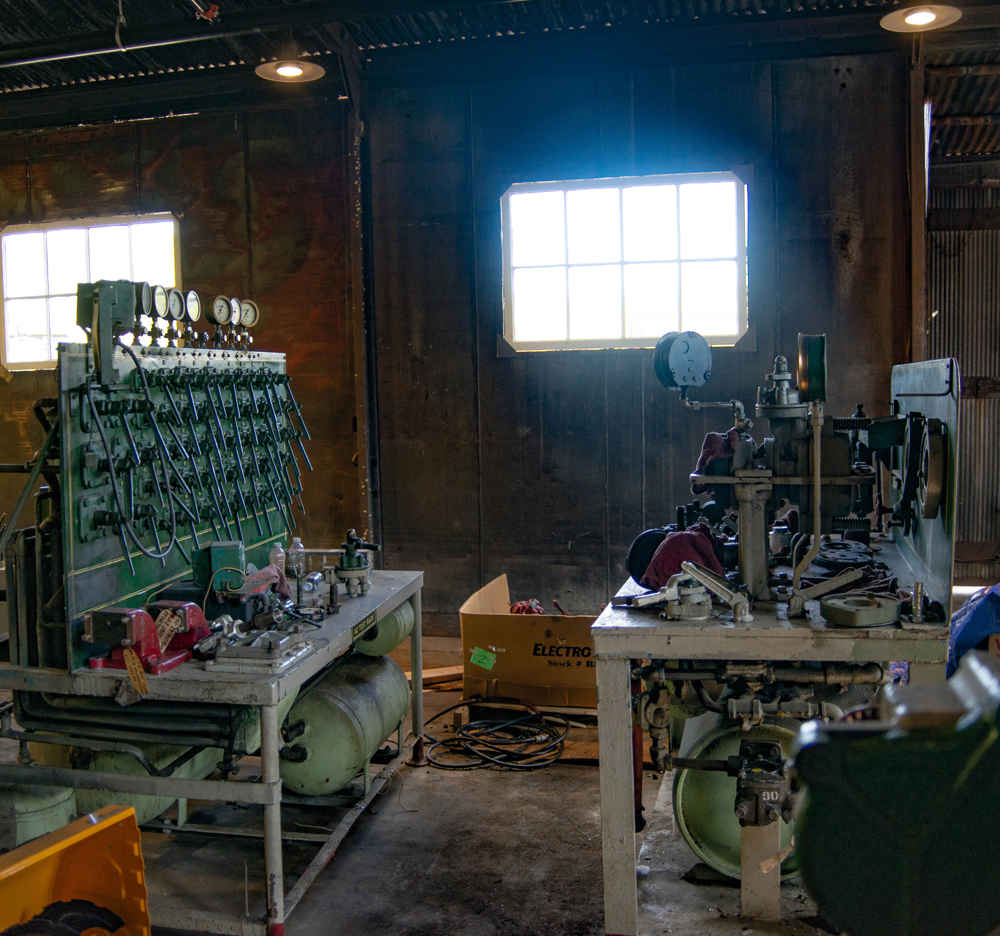
Until now, EBT has concentrated on repairing, replacing, or renewing equipment for its own needs. But Domitrovich has positioned the railroad to handle outside air-brake work by hiring Ron Freitag, a mechanic formerly with Strasburg Rail Road, and by trading with another railroad museum to acquire four air-brake test benches that can handle all kinds of equipment.
EBT has a triple-valve air-brake bench in one of its historic shop buildings, but using this equipment will avoid wear and tear on antique machinery.
The four benches can handle triple-valve (including K- and P-type valves), 4C, UC or Universal Control, and AB-style brake equipment. Other equipment includes a brake-valve lapping machine and compressor, a surface grinder, two lathes, and a Bridgeport milling machine.
“I’m excited that it will bring contract revenue into the company,” he said. “I’ve wanted to do this from the beginning.”
New equipment for track maintenance
EBT has acquired a ballast regulator from Quality Track Products in Ohio and a tamper from a contractor in Wellsboro, Pa. Both were converted from standard gauge to three-foot gauge before arriving at EBT. The tamper conversion was carried out by a member of Friends of the East Broad Top, Craig Musser. The benefit is that these on-track machines will allow EBT to mechanize what had been a nearly all-manual task.






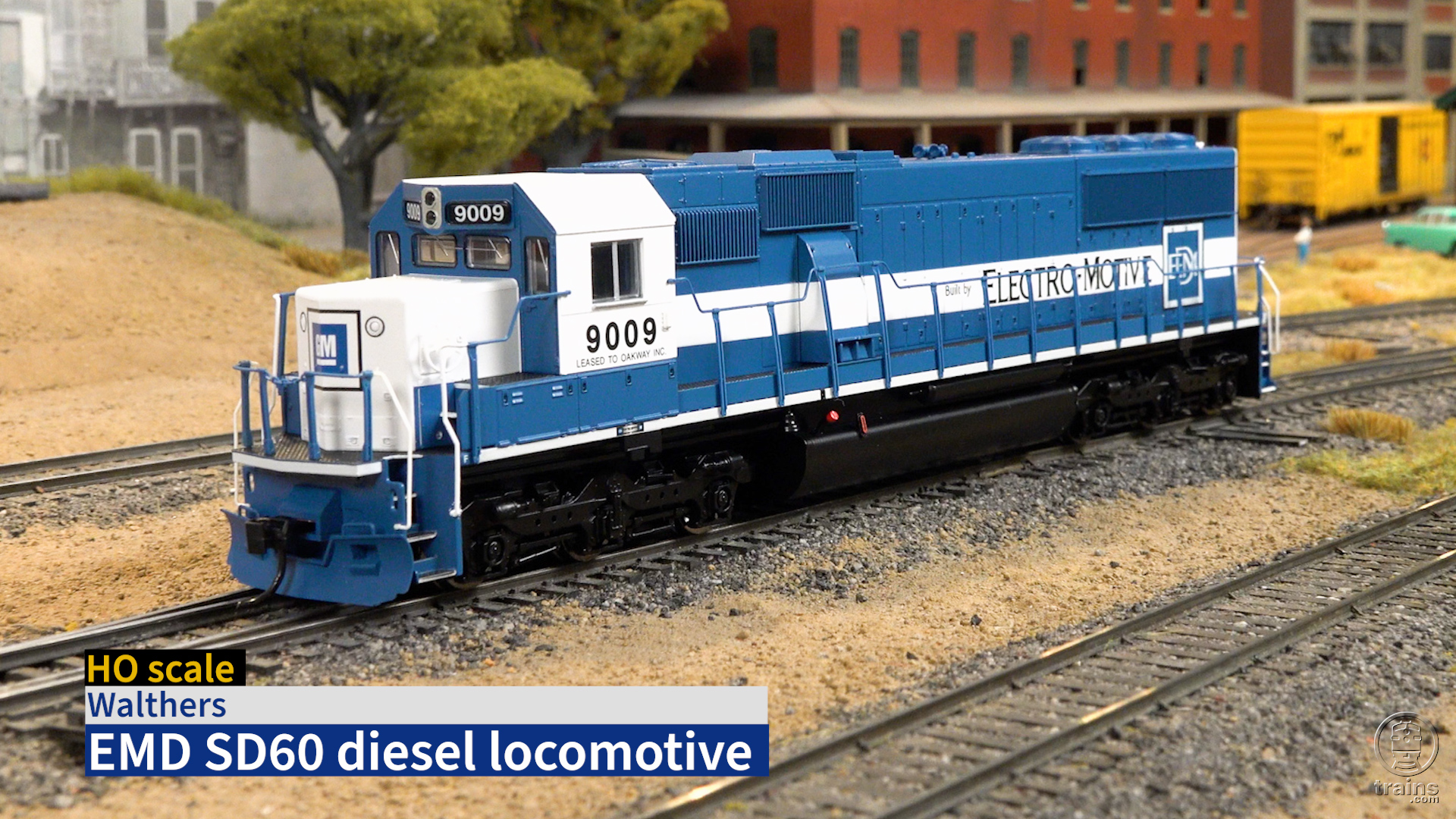
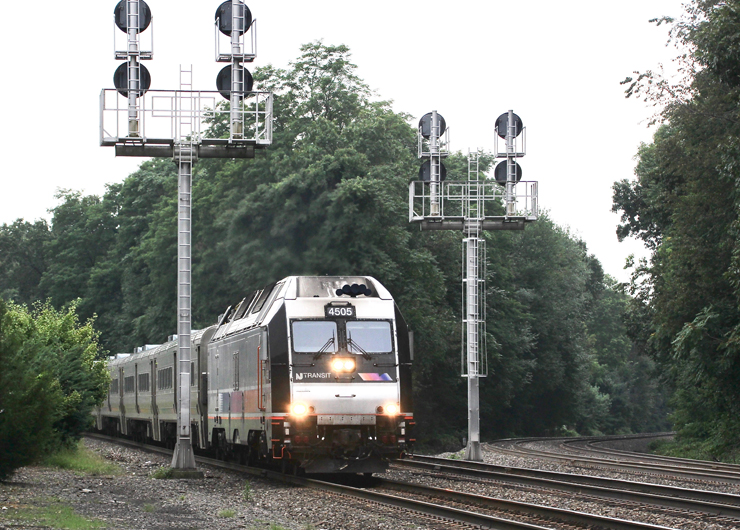

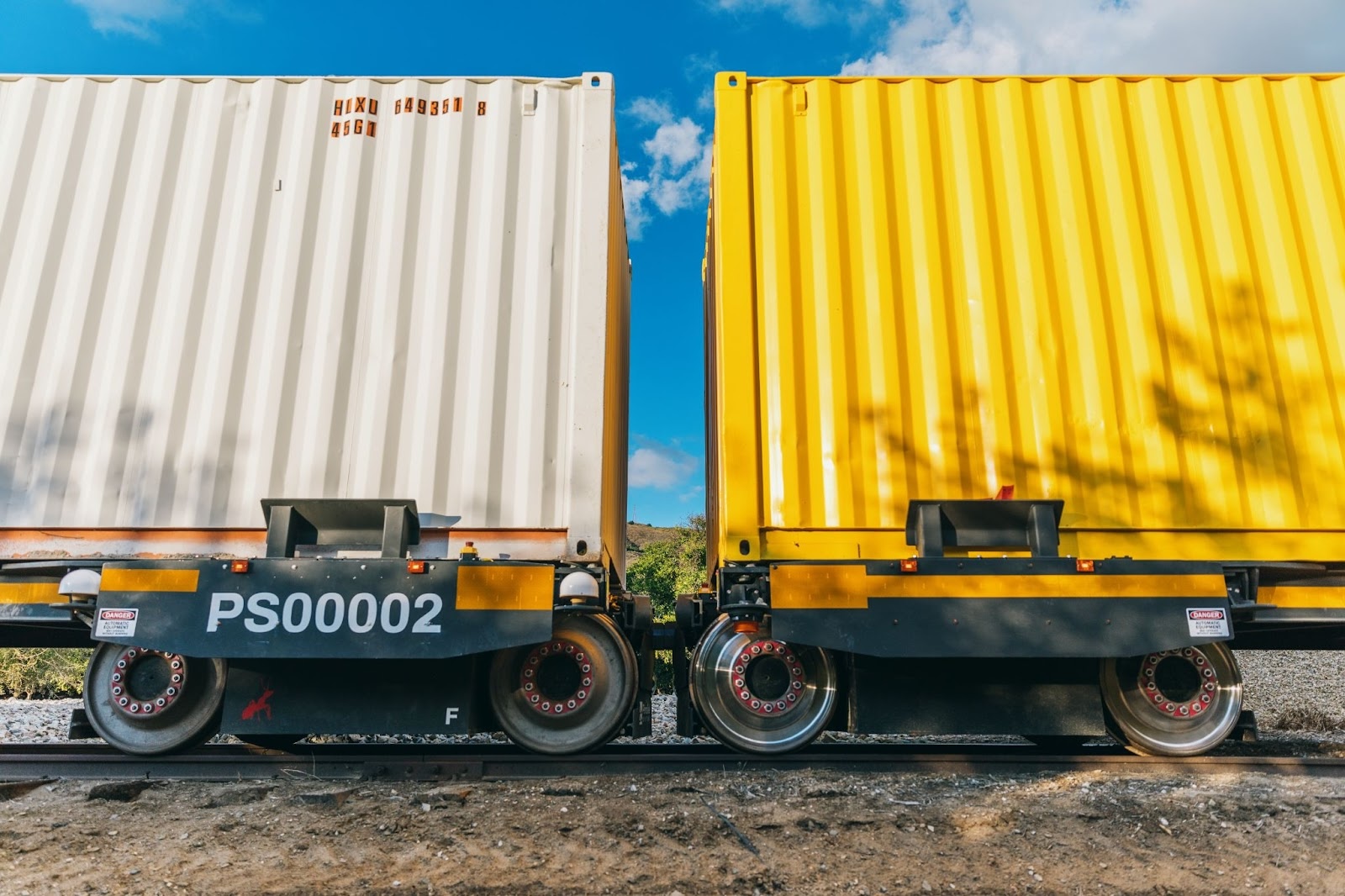




All of EBT’s engines have dynamos to provide electricity to the engine and tender only.
As to superheat, all of the 2-8-2’s used by WP&Y, D&SNG and C&TS are superheated.
The air room equipment also requires a feed valve rack. Maybe there is one that is just not mentioned. Likewise a 6-ET rack. Otherwise it sounds like it is fully equipped and even more so which can allow for additional outside work and revenue.
A tamper and ballast regulator. That is very important to the EBT. Now maybe they can get donations of used cross ties and ballast.
I can see a lot of ties removed here might be used. Tie removal and placement cart would be nice.
wow that’s a lot of progress
I am thrilled to learn what this group is doing. Serious work to preserve a historic gem. We are blessed to have them.
Great reporting, Dan! Thank you.
Each time I read one of these update articles about the amount and quality of work going on at EBT my eyes bug out and my mouth drops open. These folks are dang serious!!!
It is wonderful to see all this talent, both paid and volunteer, come together for such an authentic restoration of a national treasure.
I presume the source of heat for the new coaches will be steam from the locomotive, in classic style. What is the source of electricity for lighting? Batteries and axle generators on the cars?
It depends on the electrical needs. A lot of steam engines have dynamos, but those alone may not be enough to supply all the power for the whole consist. In that case, I would assume at least some cars have undercarriage diesel generators, or there may be a “power car,” a boxcar converted to house a standalone diesel generator.